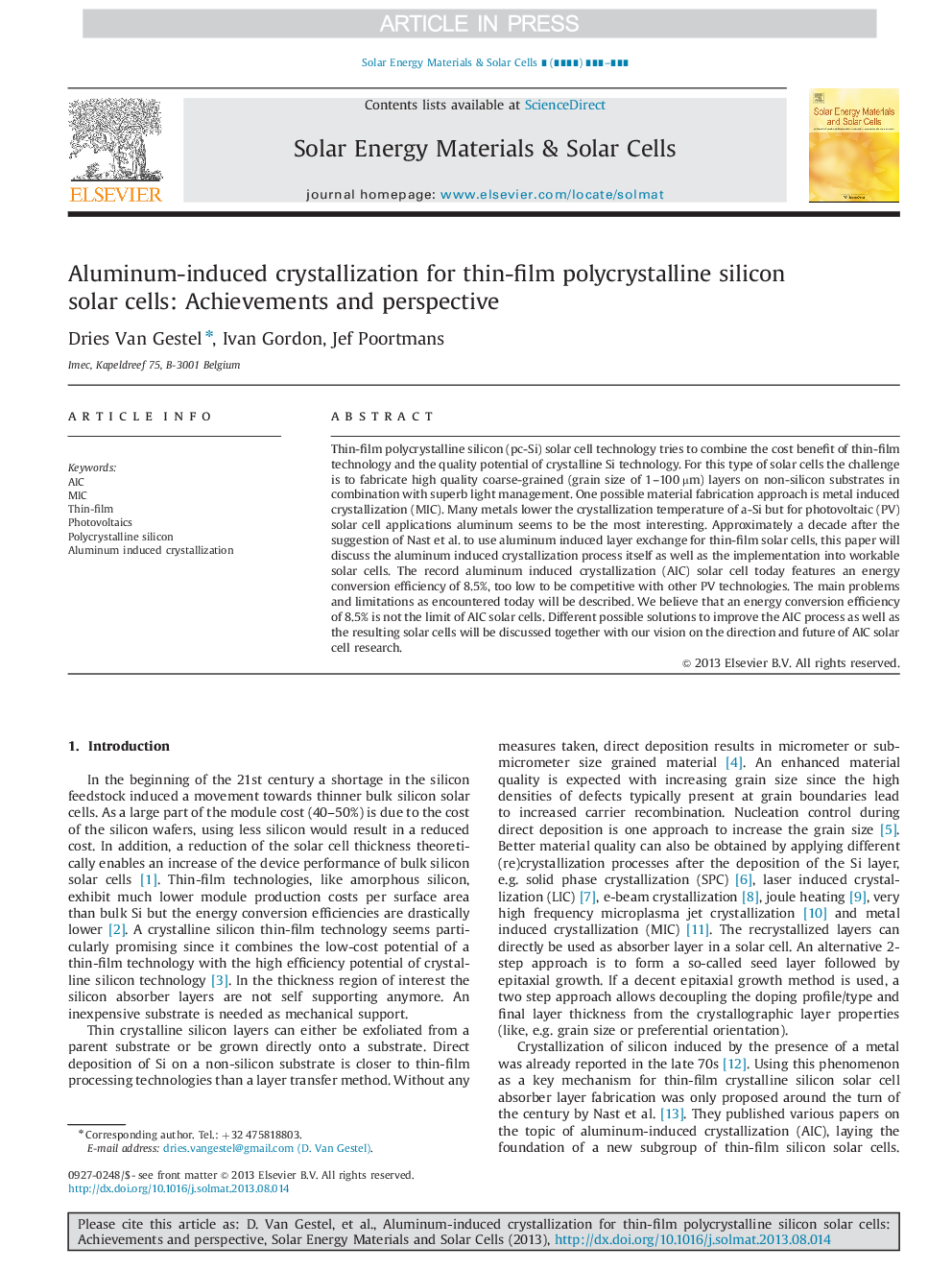| Article ID | Journal | Published Year | Pages | File Type |
|---|---|---|---|---|
| 6536019 | Solar Energy Materials and Solar Cells | 2013 | 10 Pages |
Abstract
Thin-film polycrystalline silicon (pc-Si) solar cell technology tries to combine the cost benefit of thin-film technology and the quality potential of crystalline Si technology. For this type of solar cells the challenge is to fabricate high quality coarse-grained (grain size of 1-100 µm) layers on non-silicon substrates in combination with superb light management. One possible material fabrication approach is metal induced crystallization (MIC). Many metals lower the crystallization temperature of a-Si but for photovoltaic (PV) solar cell applications aluminum seems to be the most interesting. Approximately a decade after the suggestion of Nast et al. to use aluminum induced layer exchange for thin-film solar cells, this paper will discuss the aluminum induced crystallization process itself as well as the implementation into workable solar cells. The record aluminum induced crystallization (AIC) solar cell today features an energy conversion efficiency of 8.5%, too low to be competitive with other PV technologies. The main problems and limitations as encountered today will be described. We believe that an energy conversion efficiency of 8.5% is not the limit of AIC solar cells. Different possible solutions to improve the AIC process as well as the resulting solar cells will be discussed together with our vision on the direction and future of AIC solar cell research.
Related Topics
Physical Sciences and Engineering
Chemical Engineering
Catalysis
Authors
Dries Van Gestel, Ivan Gordon, Jef Poortmans,
